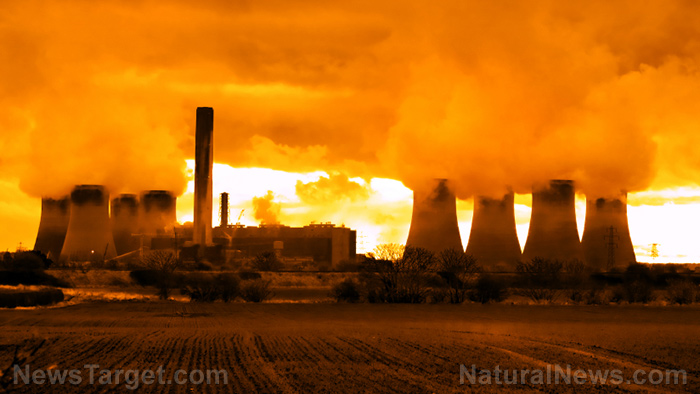Fukushima radioactive wastewater release plans spark concerns from farmers, neighbors
11/08/2021 / By Cassie B.

As the Japanese government pushes forward with its plans to release water that was contaminated from the nuclear disaster at Fukushima into the ocean, farmers are concerned that consumer fears will once again have a negative impact on their business following a decade of slow recovery.
The water will be processed to remove radioactive contamination prior to release, although it is worth noting that tritium cannot be removed from the water. However, the radioactive isotope will be diluted to one seventh of the guidelines set out by the World Health Organization for drinking water before being released into the Pacific Ocean roughly a kilometer out from the plant.
The government plans to release more than a million tons of the contaminated water some time around spring of 2023. International authorities have been supportive of the plan, but concerns abound from local fishermen and farmers as well as South Korea and China.
In addition to concerns about the water’s radioactivity, there are additional questions about the water’s quality because of the amount of time it has spent standing in tanks. Some experts have said that the water needs further testing before it is released.
The Daichi plant is currently being decommissioned during cleanup operations carried out by Tokyo Electric Power Company holdings (TEPCO) in work that is expected to take decades. The site of the disaster is quickly approaching its storage limits for contaminated water. Right now, around 1000 tanks standing 40 feet tall are crowding the site; each holds enough radioactive water to fill 500 Olympic-sized swimming pools. Releasing the water will make more space available for the overall cleanup to continue.
TEPCO is expected to compensate for damages related to the release of the water; they have already paid out around $89 billion in damages related to the disaster.
Local farmers worried about release
The move comes at a time when the average price of Fukushima pears being sold in the city of Tokyo has overtaken the price of those that come from other prefectures for the first time since the 2011 earthquake and tsunami that led to the nuclear disaster.
A year afterward, prices dropped to 20 percent below the average of the price of pears from the country’s other prefectures. Fukushima is Japan’s fourth biggest source of this popular fruit, producing 13,000 tons of them in 2020. Fukushima’s Agricultural Technology Center has been screening produce for radioactive cesium, and it goes through multiple checks for radioactivity. In addition, farmers screen it prior to shipping it out.
Japanese consumers are known for being particular about the produce they buy, paying careful attention to its place of origin and degree of freshness.
A pear farmer and vice-leader of a local agricultural coop, Hiroaki Kusano, said: “We’re just about seeing our prices go back to normal after a big drop following the disaster, but now we will have to deal with the potential reputational damage all over again because of the release of the water.”
Some pear farmers have said that they feel helpless in this situation. Although they intend to explain the measures being used to ensure the safety of the produce, many consumers are expected to choose to play it safe, and the industry will continue to suffer.
South Korea objects to release of water
Last month, new Japanese Prime Minister Fumio Kishida visited the nuclear plant and announced that he would be sticking to his predecessor’s timeline, emphasizing that the wastewater disposal cannot be delayed. This prompted concerns from South Korea, with a senior foreign ministry official saying: “Japan’s decision (to discharge the wastewater) was made without enough consultations with the neighboring nations.
“We have expressed serious concerns and opposition to its plan, which could affect our people’s health and security as well as the ocean environment.”
Sources for this article include:
Submit a correction >>
Tagged Under:
clean water, Daichi, environ, Fukushima, Japan, radiation, South Korea, wastewater
This article may contain statements that reflect the opinion of the author
RECENT NEWS & ARTICLES
COPYRIGHT © 2017 FUKUSHIMAWATCH.COM
All content posted on this site is protected under Free Speech. FukushimaWatch.com is not responsible for content written by contributing authors. The information on this site is provided for educational and entertainment purposes only. It is not intended as a substitute for professional advice of any kind. FukushimaWatch.com assumes no responsibility for the use or misuse of this material. All trademarks, registered trademarks and service marks mentioned on this site are the property of their respective owners.


















